-
Scientists develop new way to find age of drinking water
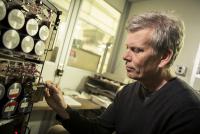
It can take days for water to travel from a filtration plant to your tap and the length of time the journey takes could affect water quality. Disinfectants from water treatment, like chlorine, prevent the growth of harmful microbes, but they can break down over time, creating toxic byproducts in the process. Minimizing the water’s travel time in pipes reduces both processes, but measuring that time is difficult. Scientists have developed a new method of finding the age of water at any point in a distribution system using something that is already naturally in water: residual radioactive atoms from nuclear fallout of the 1950s and early 1960s.
-
-
WH finalizing executive order tightening background checks of gun buyers

Sources say that the White House is about to announce a new executive order to expand background checks of individuals wishing to purchase guns. One proposal being considered would designate more sellers as high-volume dealers, closing a legal loophole which allows many sales conducted online or at gun shows to escape existing background check provisions. Two other developments on the gun front: On Thursday, Connecticut governor Dan Malloy said he would sign an executive order which would bar people on the government’s terrorism watch lists from buying guns in Connecticut; in the House, Democrats demand that a 17-year ban on government-funded research into violence involving firearms be ended.
-
-
U.S. capability for treating Ebola outbreak sufficient but limited
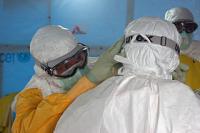
The United States has sufficient capacity for treating another outbreak of the Ebola virus, but financial, staffing and resource challenges remain a hurdle for many hospitals and health systems attempting to maintain dedicated treatment centers for highly infectious diseases, according to new study.
-
-
Plant virus to make Ebola detection more accurate
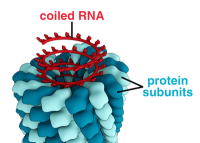
In the past, Ebola diagnostic tests, or assays, have been considered reliable only up to a point. The Ebola virus does not use DNA to store its genetic code. It uses a chemical cousin, called RNA, and extracted RNA degrades easily; one little mistake at the start of a test can ruin the whole thing. Novel process uses a plant virus and may ultimately make Ebola testing more accurate.
-
-
Scientists create malaria-blocking mosquitoes

Using a groundbreaking gene editing technique, scientists have created a strain of mosquitoes capable of rapidly introducing malaria-blocking genes into a mosquito population through its progeny, ultimately eliminating the insects’ ability to transmit the disease to humans. The technique holds the promise of eradicating a disease that sickens millions annually.
-
-
Study finds that Ebola vaccine is safe, stimulating strong immune responses
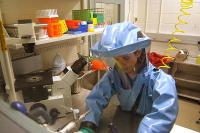
A clinical trial of a new Ebola vaccine that resulted from an unprecedented global consortium assembled at the behest of the World Health Organization (WHO) has found that it is well tolerated and stimulates strong immune responses in adults in Mali, West Africa and in the United States. If the vaccine is ultimately found to be safe and effective, it could offer crucial protection for contacts (family members, neighbors, etc.) of patients with confirmed Ebola disease in future epidemics, thereby helping to interrupt transmission. Larger trials of the vaccine sponsored, by GSK Biologicals, have already begun.
-
-
Novel statistical model maps lethal route of Ebola outbreak
The traditional method to track disease spread is contract tracing, in which health workers interview patients and everyone they came into contact with. Contact tracing, however, is highly labor intensive. Using a novel statistical model, a research team mapped the spread of the 2014-15 Ebola outbreak in Sierra Leone, providing the most detailed picture to date on how and where the disease spread and identifying two critical opportunities to control the epidemic. The result matches with details known about the early phase of the Ebola outbreak, suggesting the real-time value of the new method to health authorities as they plan interventions to contain future outbreaks, and not just of Ebola.
-
-
Killer bees send six to hospital in Arizona
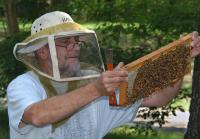
The Maricopa, Arizona fire department said six people were hospitalized on Saturday afternoon after a swarm of bees attacked residents in the Rancho El Dorado subdivision. The bees swooped down on residents of a two-block area in the subdivision about 5 p.m. Both kids and adults ran screaming for cover. Experts say the bees are a strain of the Africanized honeybee, also known as the killer bee, which is a crossbreed between the European honeybee and the African honeybee.
-
-
Centralized leadership, major reform needed to bolster U.S. biodefense
A comprehensive report on U.S. biodefense efforts calls for major reforms to strengthen America’s ability to confront intentionally introduced, accidentally released, and naturally occurring biological threats. The report details U.S. vulnerability to bioterrorism and deadly outbreaks and emphasizes the need to transform the way the U.S. government is organized to confront these threats. Recommendations include centralizing leadership in the Office of the Vice President; establishing a White House Biodefense Coordination Council; strengthening state, local, territorial, and tribal capabilities; and promoting innovation through sustained biodefense prioritization and funding.
-
-
$100 million NIAID contract to SRI International to develop radiation exposure treatment

SRI International has been awarded a resource contract of up to $100 million over five years by the National Institute of Allergy and Infectious Diseases (NIAID), part of the National Institutes of Health, for the development of products to mitigate or treat acute or delayed effects of radiation exposure.
-
-
Study: Persian Gulf could experience deadly heat
Detailed climate simulation shows that the Persian Gulf region would likely cross the threshold of survivability unless mitigation measures are taken. That tipping point involves a measurement called the “wet-bulb temperature” which combines temperature and humidity, reflecting conditions the human body could maintain without artificial cooling. That threshold for survival for more than six unprotected hours is 35 degrees Celsius, or about 95 degrees Fahrenheit, according to recently published research (the equivalent number in the National Weather Service’s more commonly used “heat index” would be about 165 F). The researchers say that hot summer conditions that now occur once every twenty days or so “will characterize the usual summer day in the future.”
-
-
Birth tourism in the U.S. delivers complex medical cases in neonatal units
Researchers examined reported “birth tourism” in the United States and how it affects neonatal intensive care unit hospitalization. They found that expectant mothers traveling to the United States with the expressed purpose of giving birth before returning home are presenting more complex medical, social, and financial challenges at a large metropolitan children’s hospital. The researchers documented a higher medical complexity, longer hospital stays, and increased re-hospitalization among babies born to traveling families.
-
-
Web sites offer incomplete information on safely storing firearms in the home
The are four safety measures which should be followed to keep children safe around guns: The guns should be kept locked and unloaded, and ammunition should be stored in a locked and separate location. The vast majority of Internet pages visited by people searching for firearms storage guidance, however, prove to be duds when it comes to giving accurate and complete information on how to keep children safe around guns. Only 2 percent of Web pages with information on firearm storage correctly identified all four practices shown to protect children and adolescents living in homes with guns.
-
-
Pediatricians: Food insecurity ongoing health risk to U.S. children
The latest data show that more than fifteen million U.S. children live in households still struggling with hunger. For the first time, the American Academy of Pediatrics (AAP) is recommending that pediatricians screen all children for food insecurity. In a new policy statement identifying the short and long-term adverse health impacts of food insecurity, the AAP also recommends that pediatricians become familiar with and refer families to needed community resources, and advocate for federal and local policies that support access to adequate, nutritious food.
-
-
One in 8 children in U.S. at risk for measles

Gaps in measles vaccination rates in the United States place one in eight children at risk for becoming sick from the highly contagious illness, according to an analysis of national vaccination coverage. Measles can lead to pneumonia, encephalitis, hospitalization and occasionally, death. Those who are not vaccinated or are undervaccinated are highly susceptible to becoming ill because measles is very contagious through direct contact and droplets that can spread through the air.
-
More headlines
The long view
A Shining Star in a Contentious Legacy: Could Marty Makary Be the Saving Grace of a Divisive Presidency?
While much of the Trump administration has sparked controversy, the FDA’s consumer-first reforms may be remembered as its brightest legacy. From AI-driven drug reviews to bans on artificial dyes, the FDA’s agenda resonates with the public in ways few Trump-era policies have.
